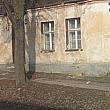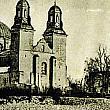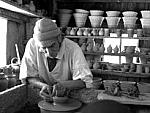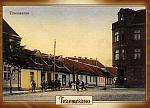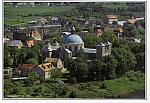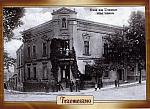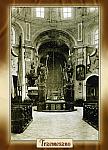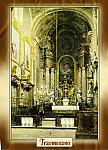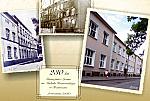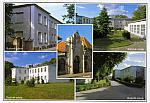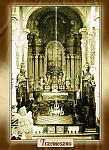
John Lipczynski's Pottery Works
John Lipginski’s place is out on East Bridge Street (Michigan St.) near the city limits, and the curious visitor will be amply repaid for the trip. He has an old-fashioned hand press upon which all the hand made flower ports are evolved, then he has the more modern machine press, which molds the pots in the twinkling of an eye.
Anyone can operate the latter, but it takes a regular trade learned potter to manipulate the old hand press. The hand made pots are far superior in appearance to the machine made, and they are those commonly used in residences. The machine pressed pots being made for the greenhouse trade. The difference in price is about ten per cent.
The clay used for the construction of flower pots is just the same as that used in brick making. Lipginski purchases his clay of Clark & Co. It is first passed through a grinder operated by steam, which reduces it to a soft pulpy mass easily handled and free from lumps. It is then ready for the potters press.
When a sufficient number of pots have been pressed and molded they are packed into the kiln, great care being necessary to stack the moulds that are soft and easily misshapen. Like the brick they are allowed to dry for some time before being burned. The kiln has a capacity of 15,000 pots of the average size, and when it is filled the door is closed with brick and sealed with a coating of clay, after which the fires are started underneath and maintained at a white heat for 60 hours.
The cooling process occupies four days and the kiln remains untouched until the necessary time has elapsed when it is opened and the content are taken out. About two days time being required to empty a kiln. There is some loss by breakage and some by the warping of the pots, caused by careless setting.
A great variety of pots are made, the simplest being the plain kind used in greenhouses. Those made for private trade show more of less ornamentation; in fact really handsome bases showing roses and other flowers in bas-relief are made to order.
Hanging baskets of pottery are cast in molds, Mr. Lipginski having at present ten molds or patterns.
The large vases formerly supplied for lawns and cemetery lots are not longer furnished except in response to private orders. They have been supplanted by iron vases that are cheaper and less liable to injury from breakage.
Just now trade is light in flower pots, but when the cool nights come and the delicate plants that are now blooming freely in the garden are likely to be injured, the careful gardener will remove them to the house, and in order to do this the pottery reserve will be freely called upon.
Excerpted from the July 29, 1893 Grand Rapids Evening Press, page 4.
Note: In the original article the reporter mistakenly writes that Lipginski worked for Clark & Co. He worked for, and eventually became a partner of Samuel Davis. The newspaper did not misspell John Lipczynski’s name. Lipginski is the name he chose to use for the Pottery Works; perhaps it was easier for his customers to pronounce.

 facebook
facebook